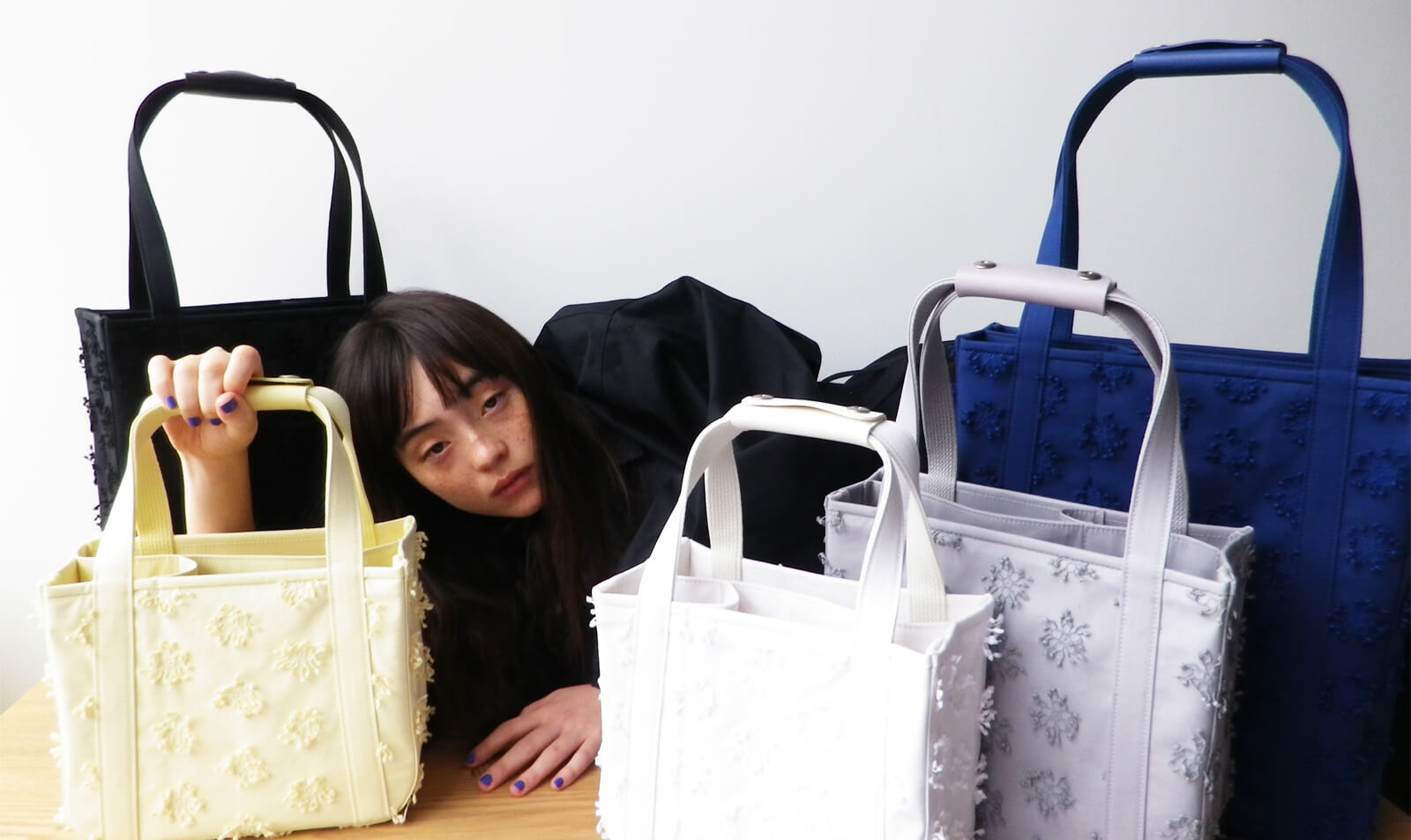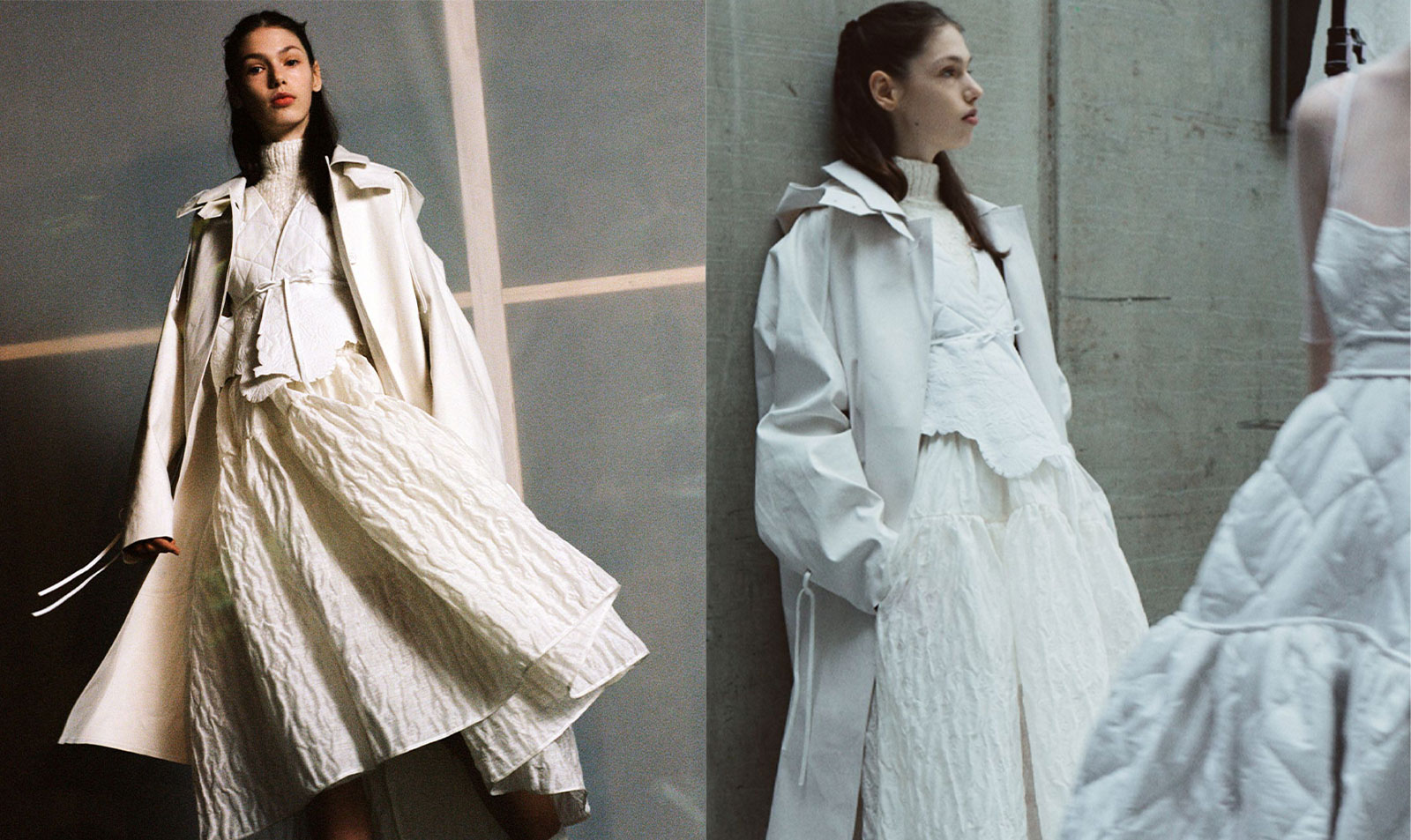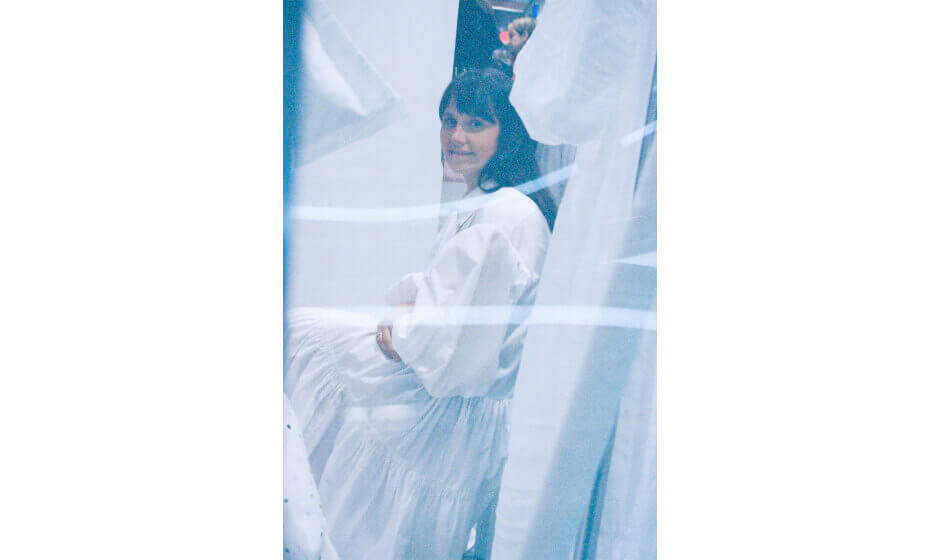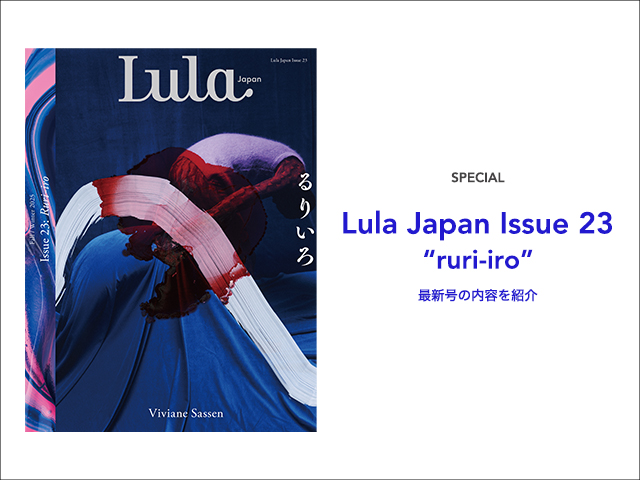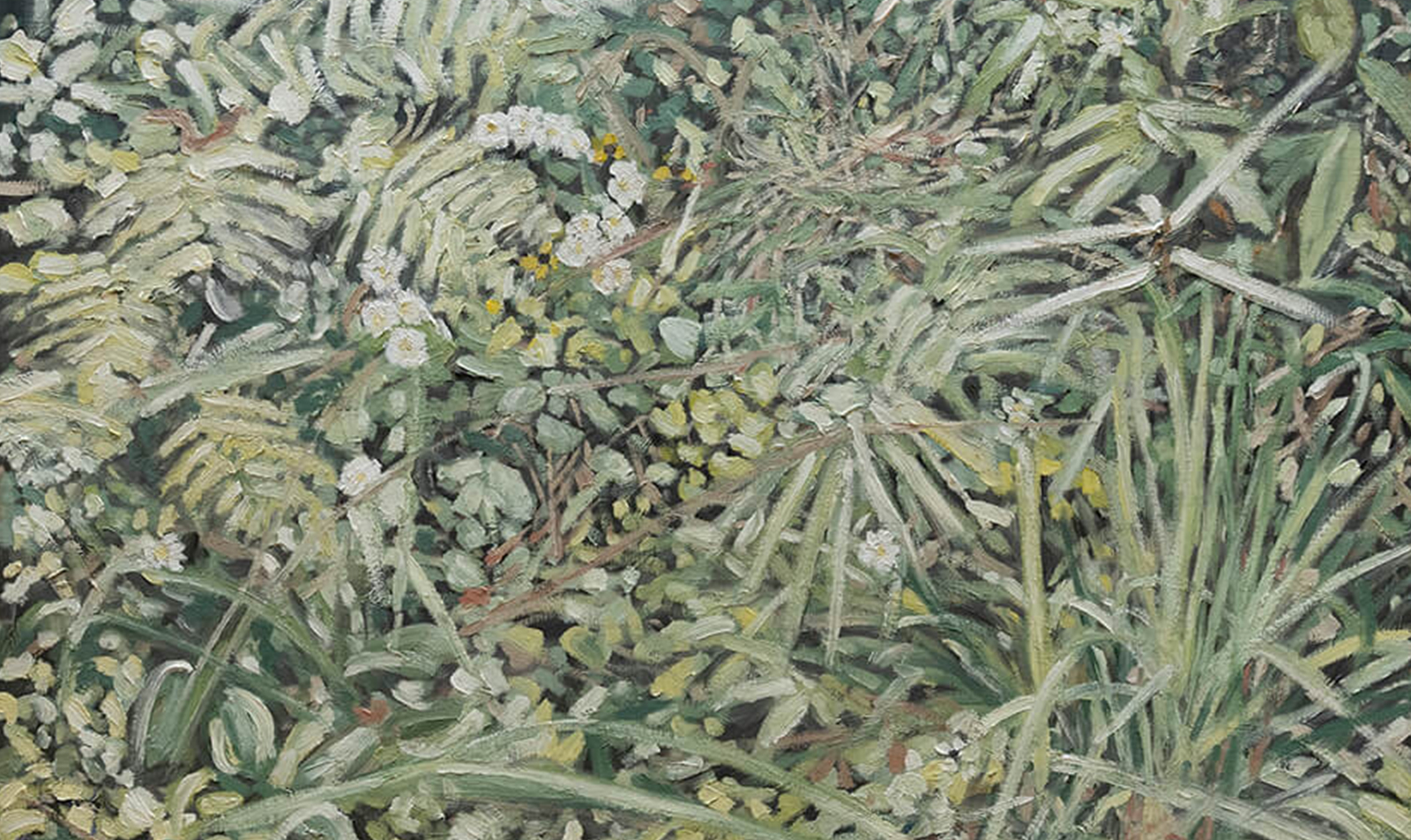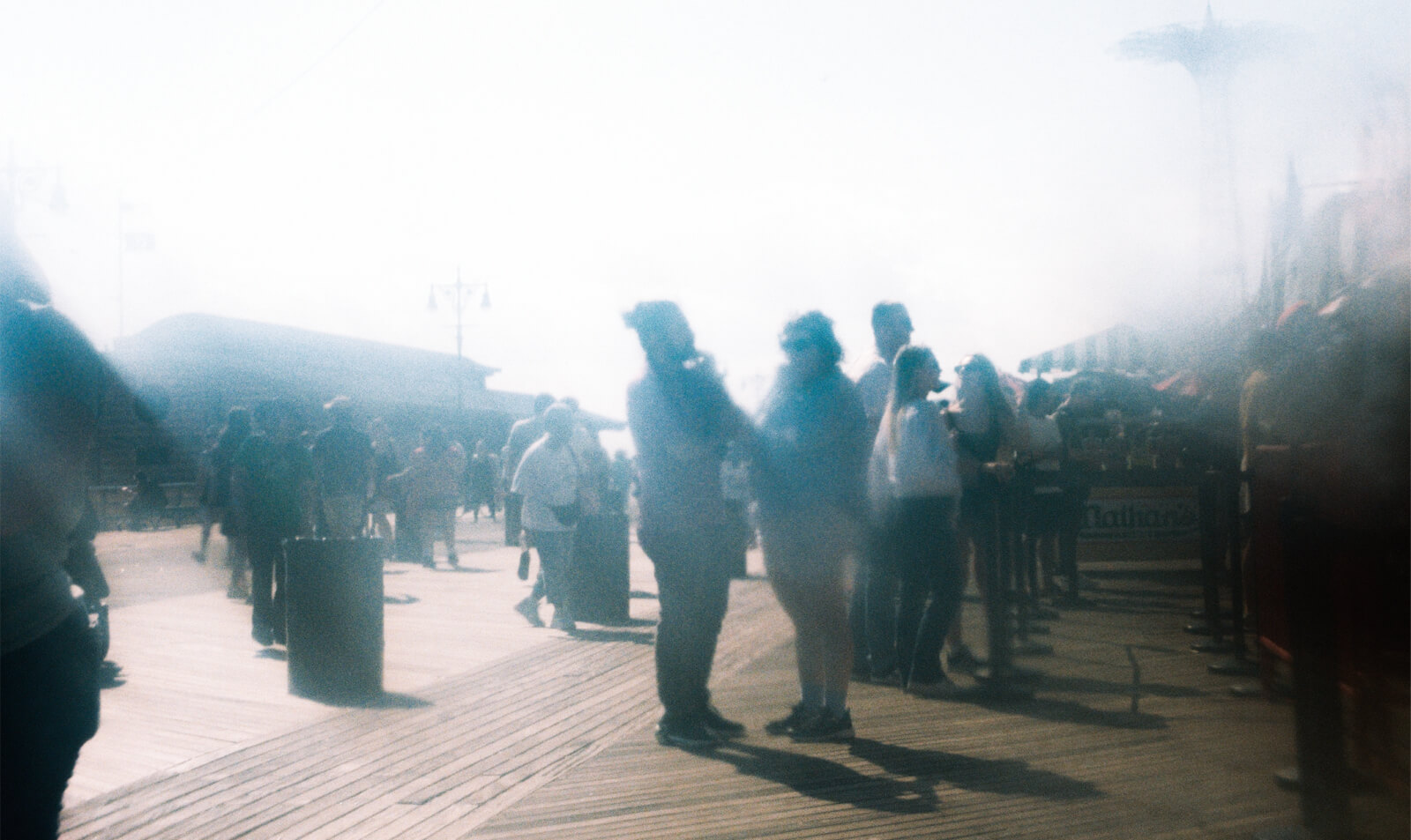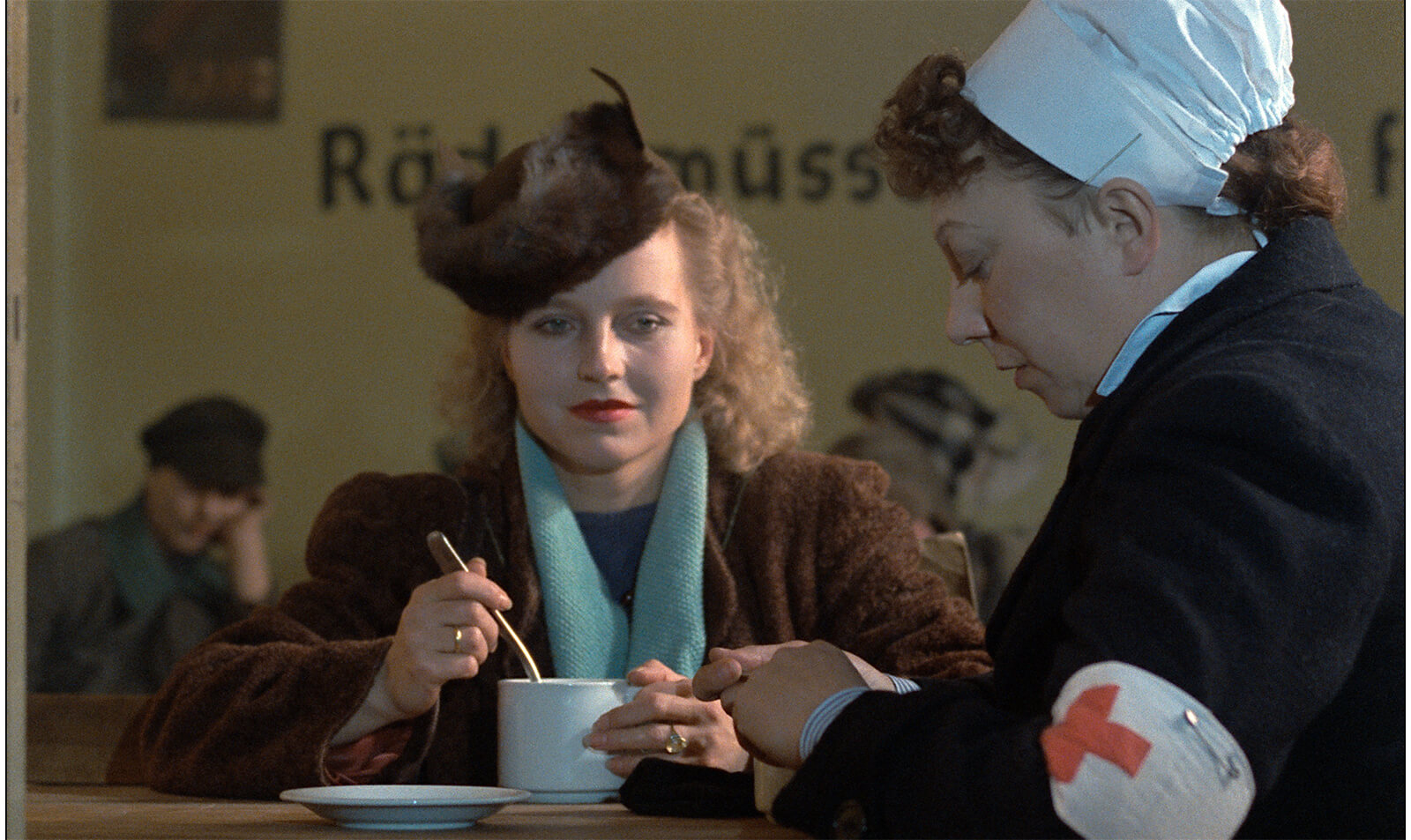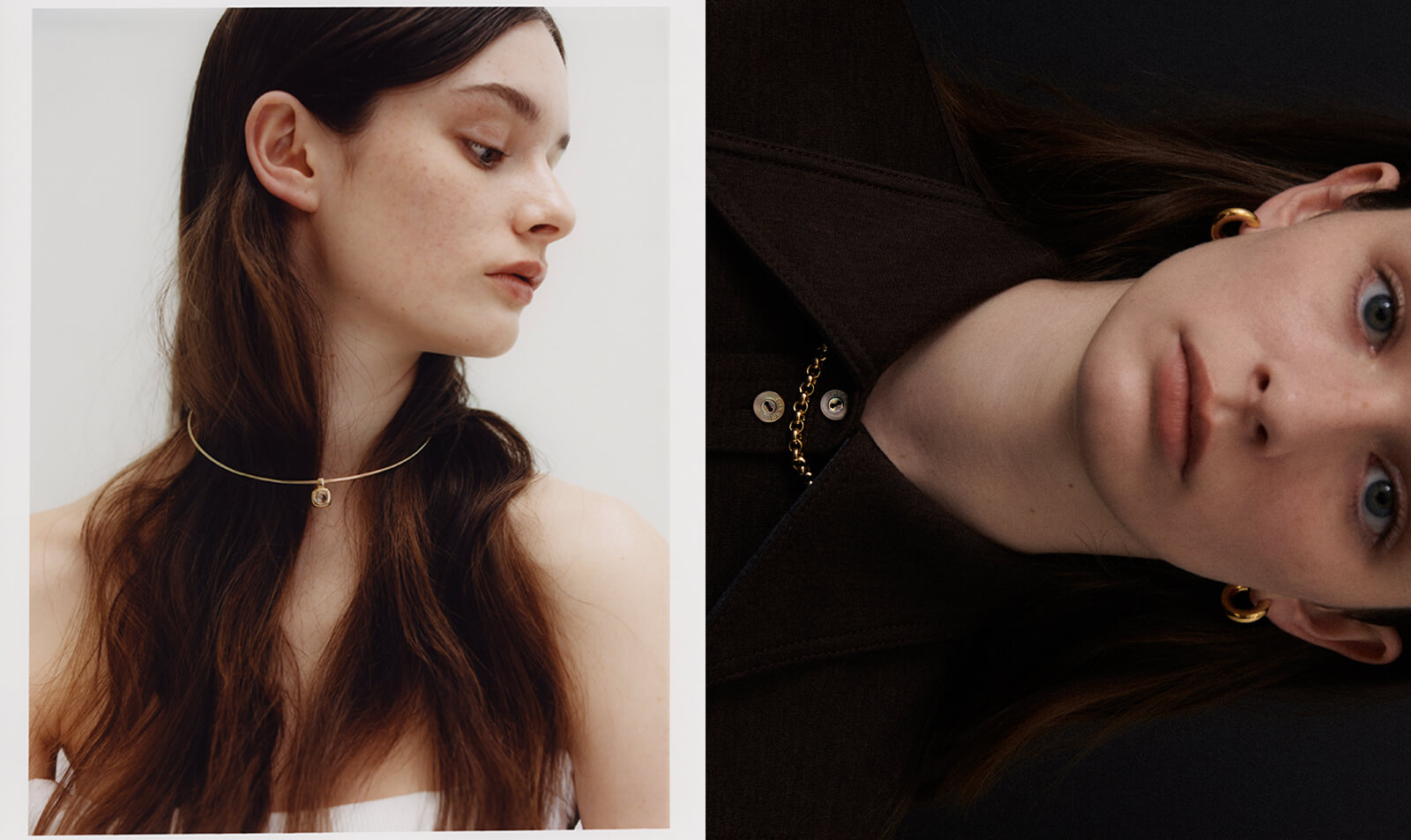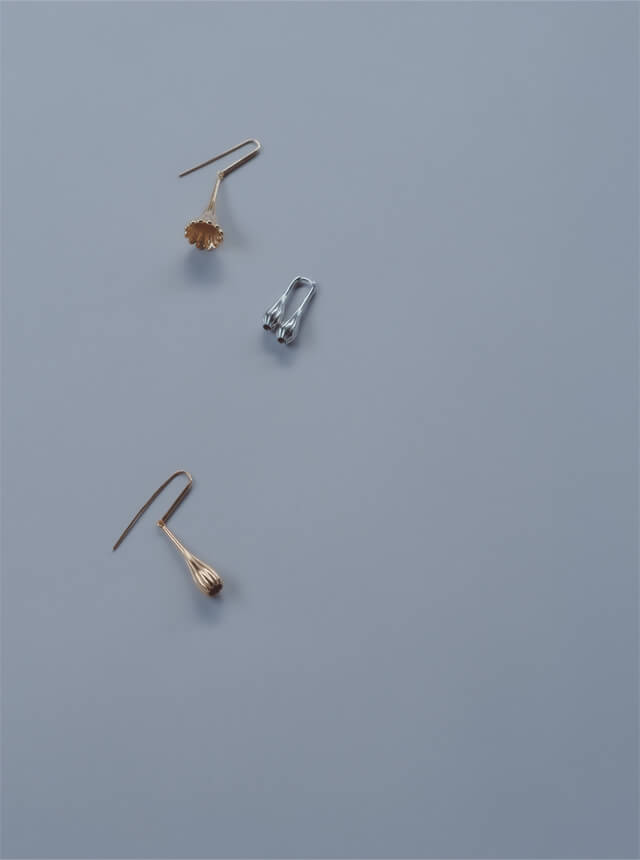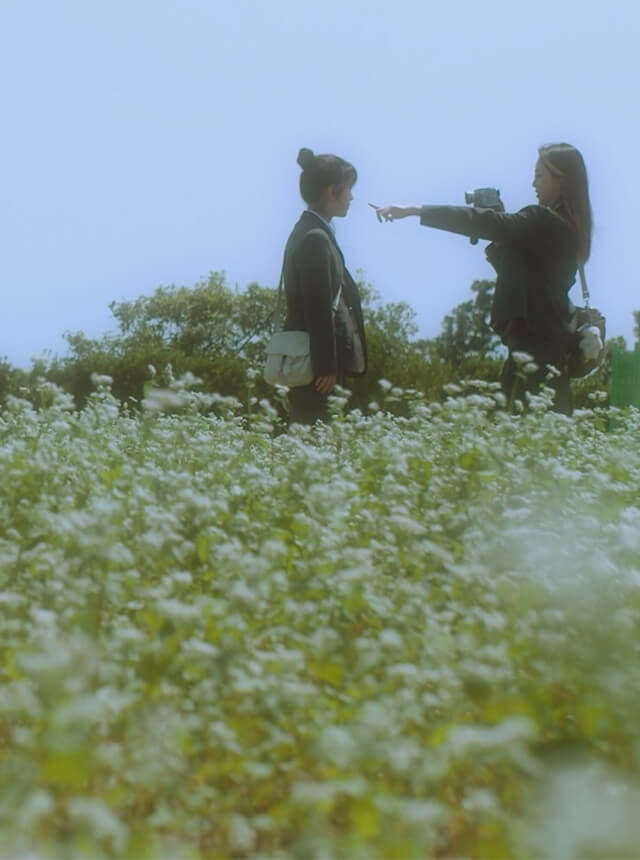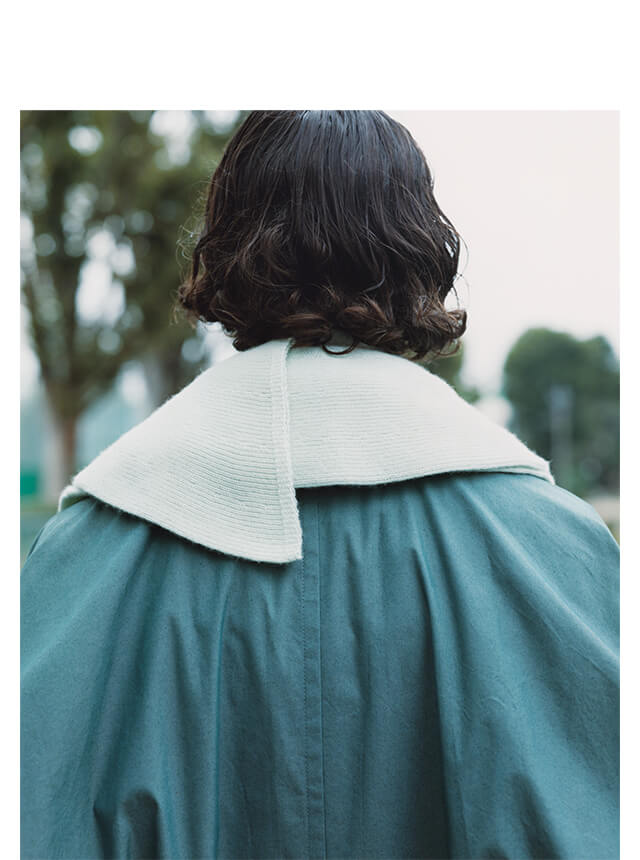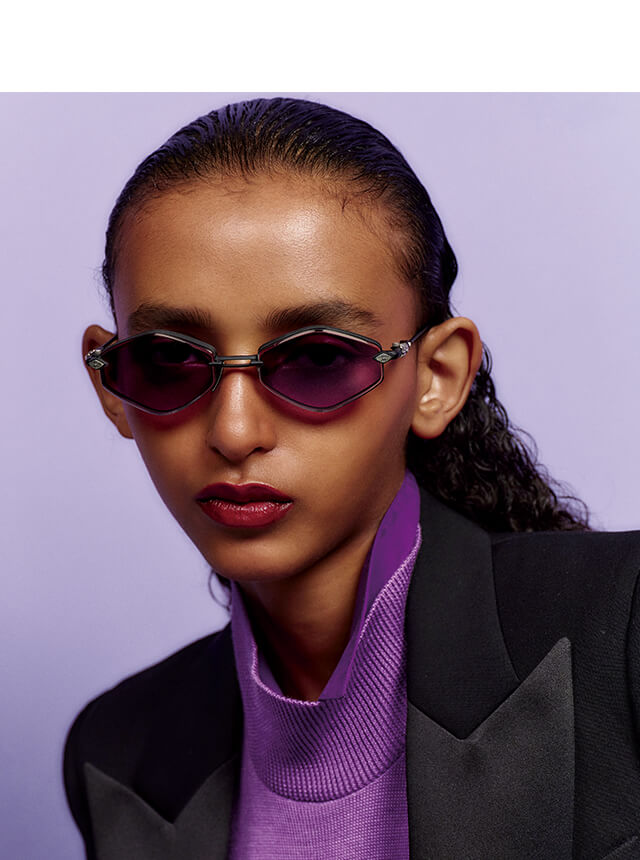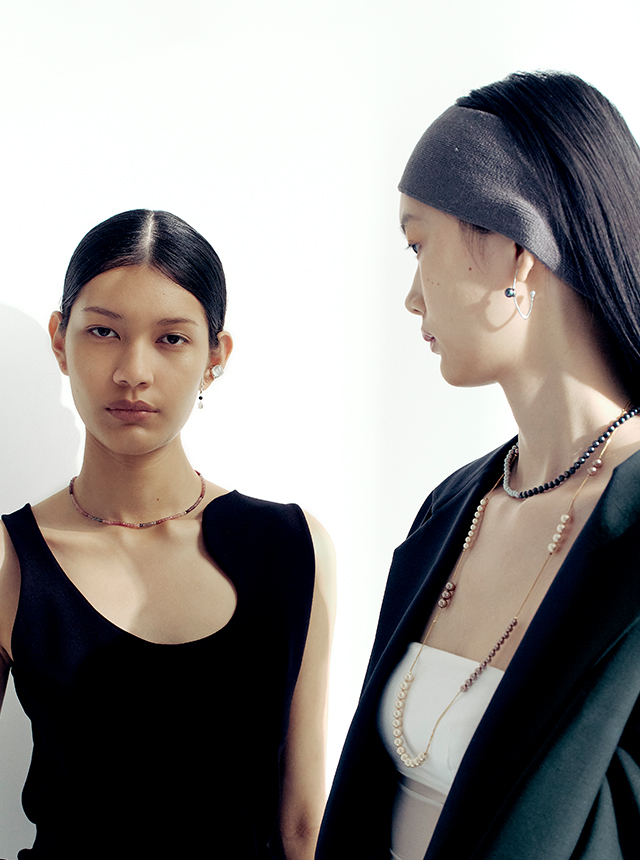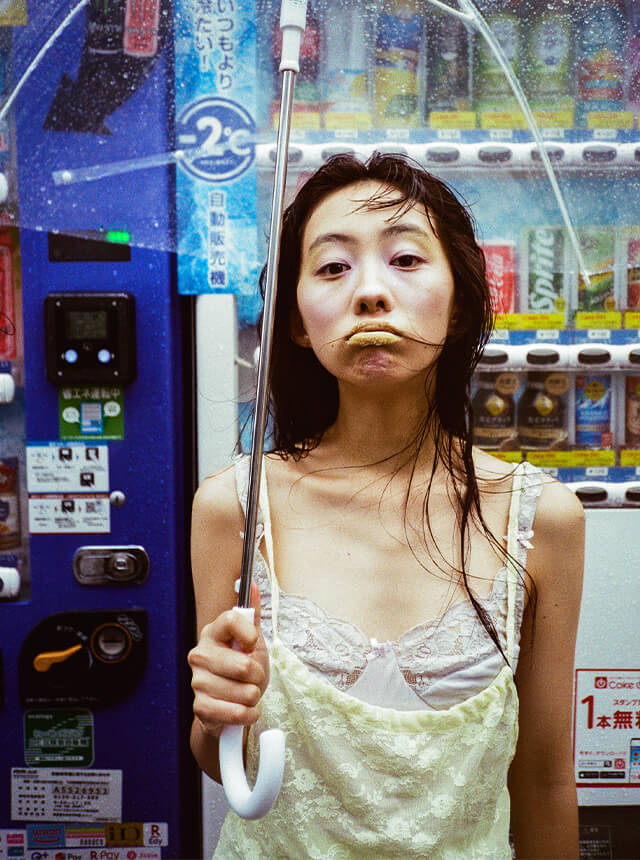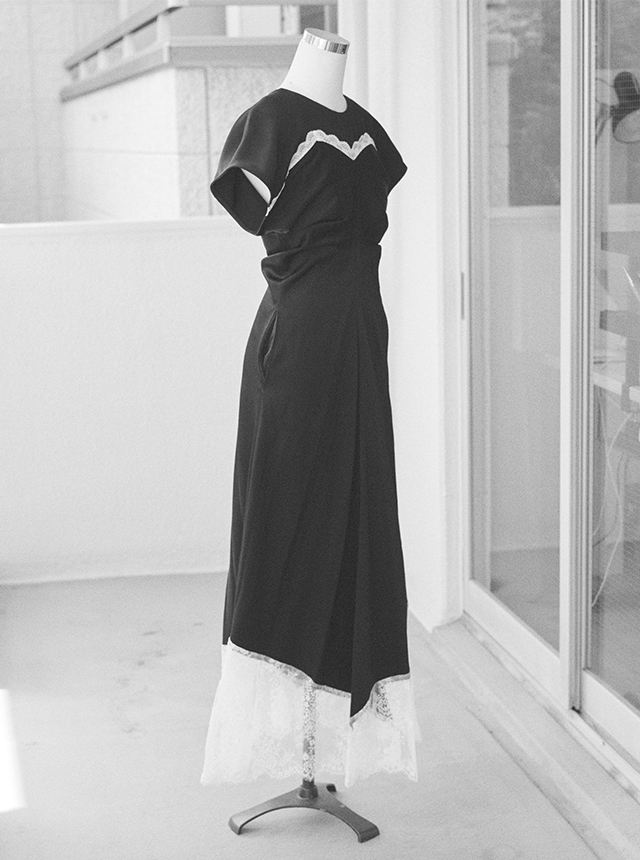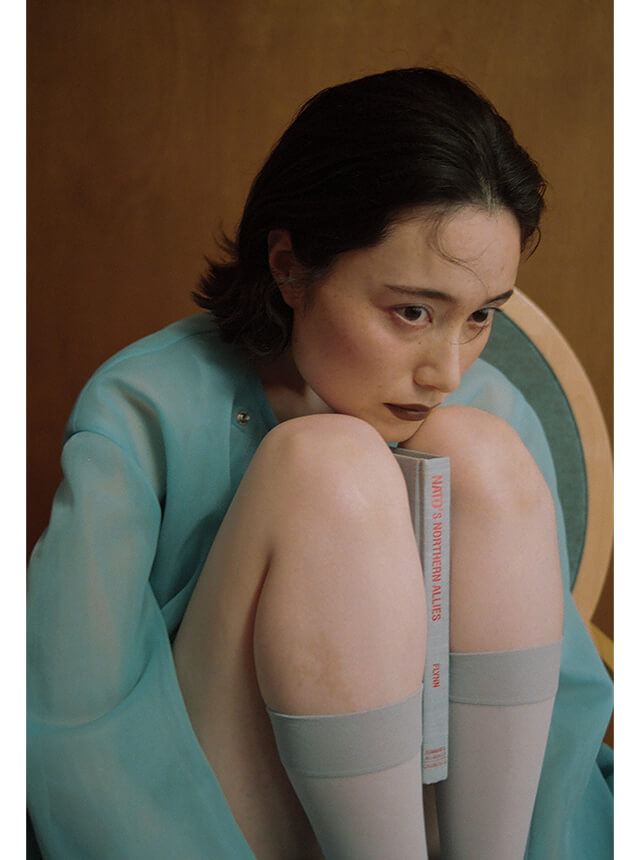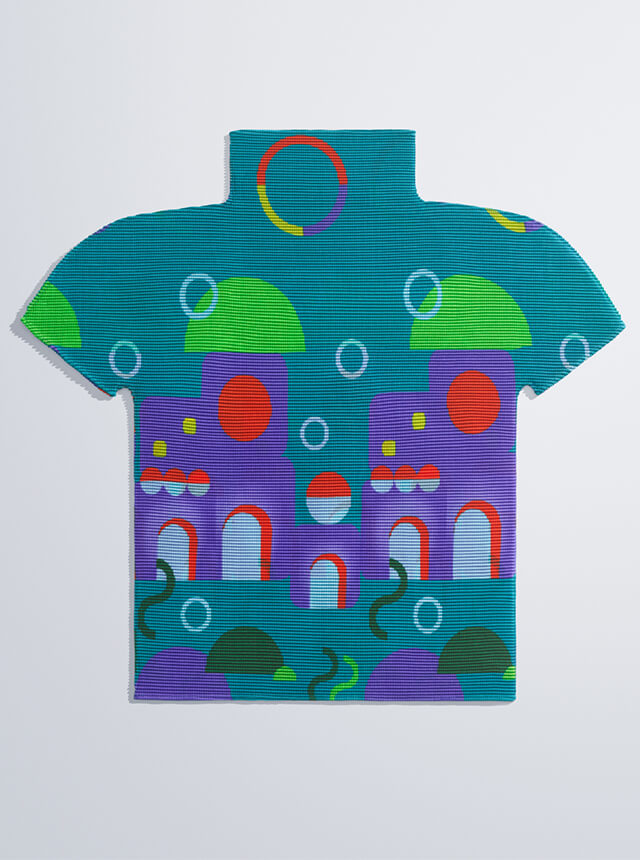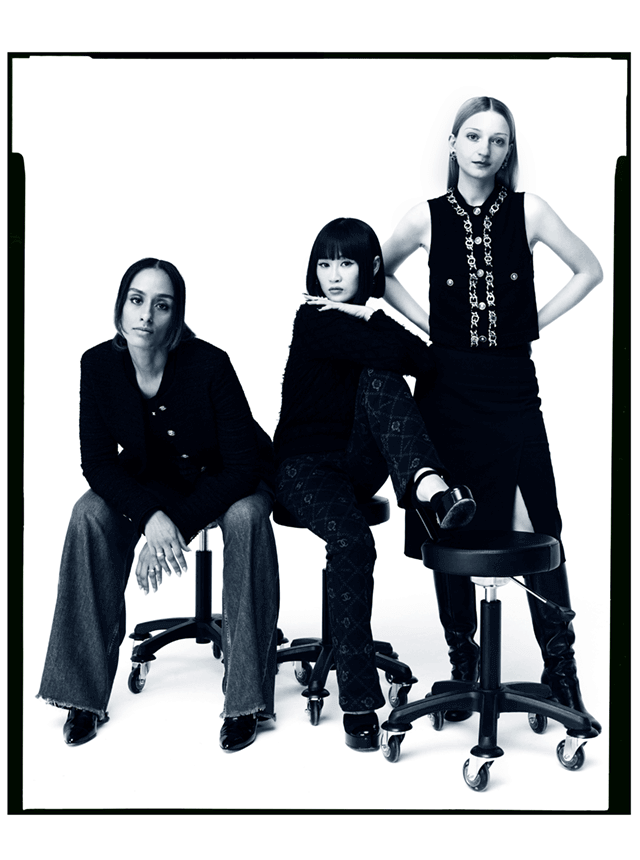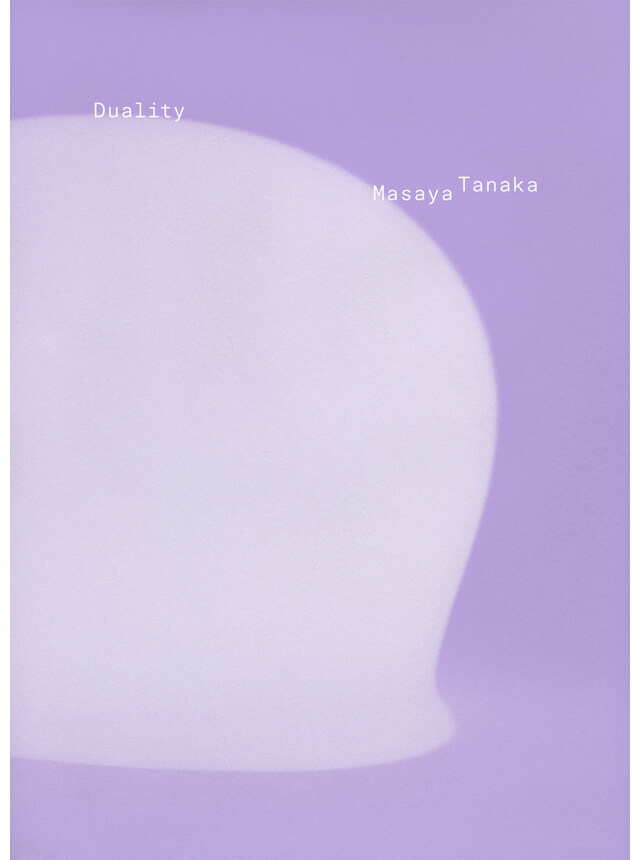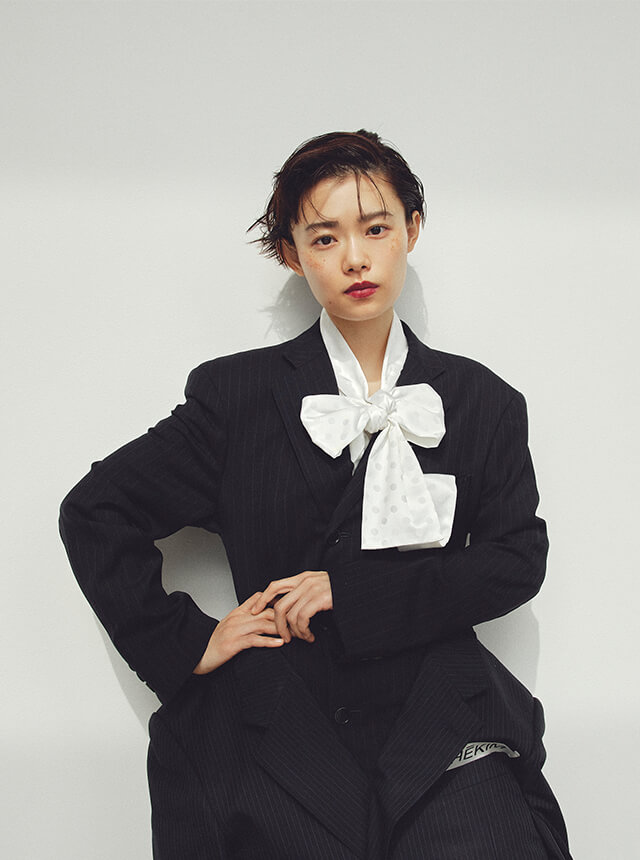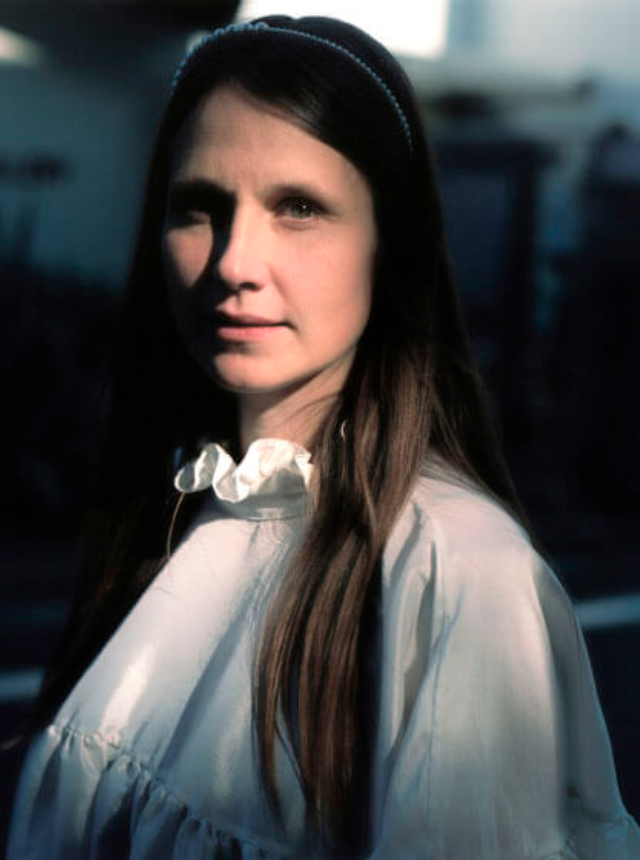
Photography by Michi Nakano
凛とした空気と、繊細な美しさをまとう「CECILIE BAHNSEN」。
思い描かれるのは、無垢な少女性に垣間見える、芯の通った女性像。
今回、英国発のECサイトMATCHESFASHIONが日本で初となる単独展示会を開催。
ゲストデザイナーとして導かれたデザイナー Cecilie Bahnsenに、彼女が描くブランドの展望、また、コレクション制作における意志を聞いた。
インタビュー第2弾は、彼女の最新コレクション、また、ブランドの今後についての内容を披露。
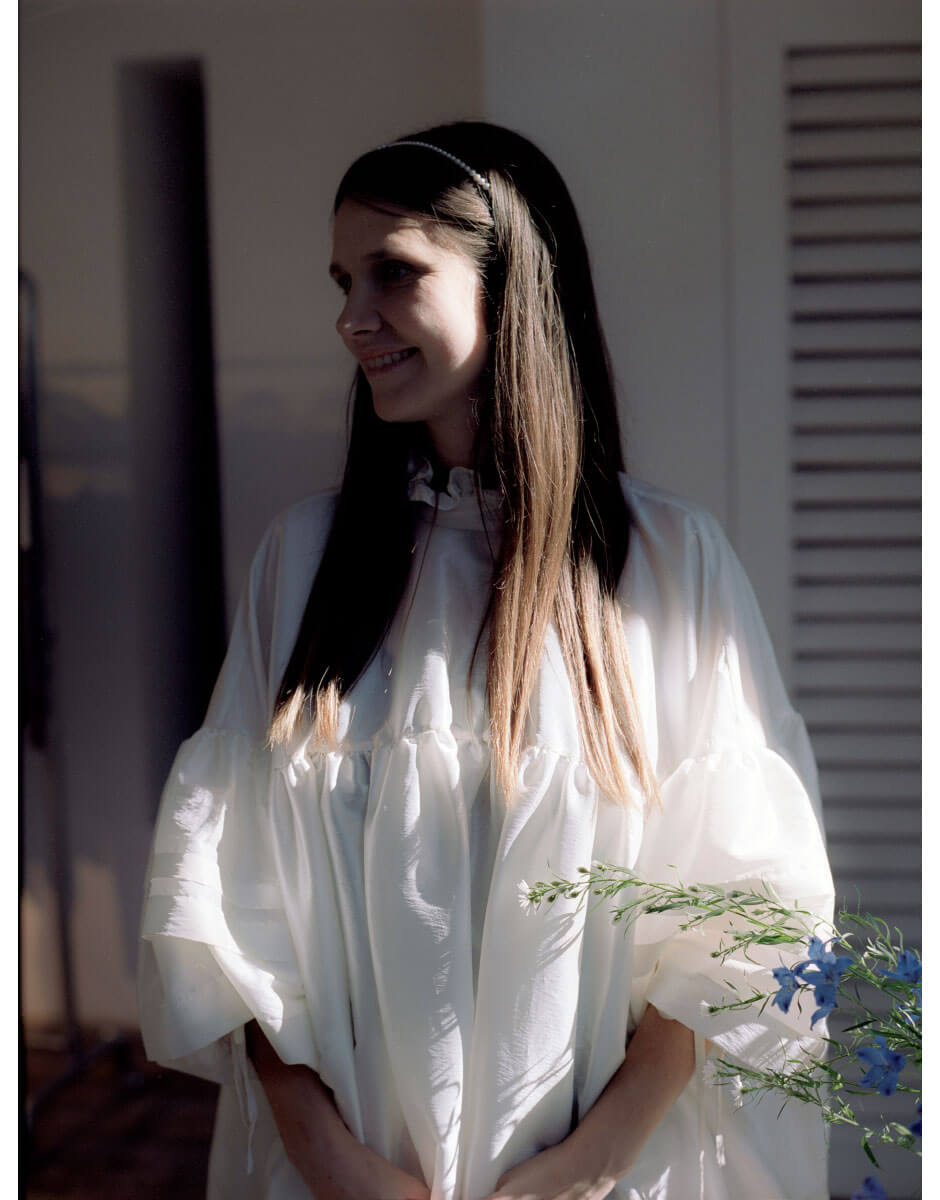
−フェミニティはブランドのコンセプトになっていると思いますが、2020年春夏コレクションでは一風変わったフェミニティが表現されている気がしました。
今コレクションでは、もっとマスキュリンなコントラストを表現したいと思っていました。
なので、より男性的な印象とシルエットを持つスーツを制作することにしました。
また、私はあらゆる女性の在り方をこれまでとは異なった方法で探ってみたかったのです。
スーツスタイルでも、作り方を工夫すれば、フェミニンさを表現できると信じていました。
私が今まで制作してきたものは構築的なものが多かったため、 今回のクリエイションはとても新鮮な経験でした。
加えて、私なりのセンシュアリティも添えました。
背中が大胆に開いたデザインや、さまざまな表情が楽しめるように、腰元で巻いたりできるディテールなど。
まるで彫刻を形作っていくように、身にまとう人を想像して、制作していきました。
−透き通るような素材を使用していながらも、エレガントでたおやかな女性像を貫いているのが素敵です。
私のコレクションには、エフォートレスで純粋な、何かがあると思います。
なので、センシュアリティやフェミニティ、マスキュリニティに寄せないようにいつも気を配っています。
アトリエの皆は、きっと私のことを慎重すぎる性格だと思う人が多いと思います。
けれども、ブランドの世界観を貫いていく上で、マスキュリンとフェミニン、複雑さとミニマルの絶妙なバランスを描き続けていくのはとても大切なのです。
これらは、「CECILIE BAHNSEN」の強みでもあります。
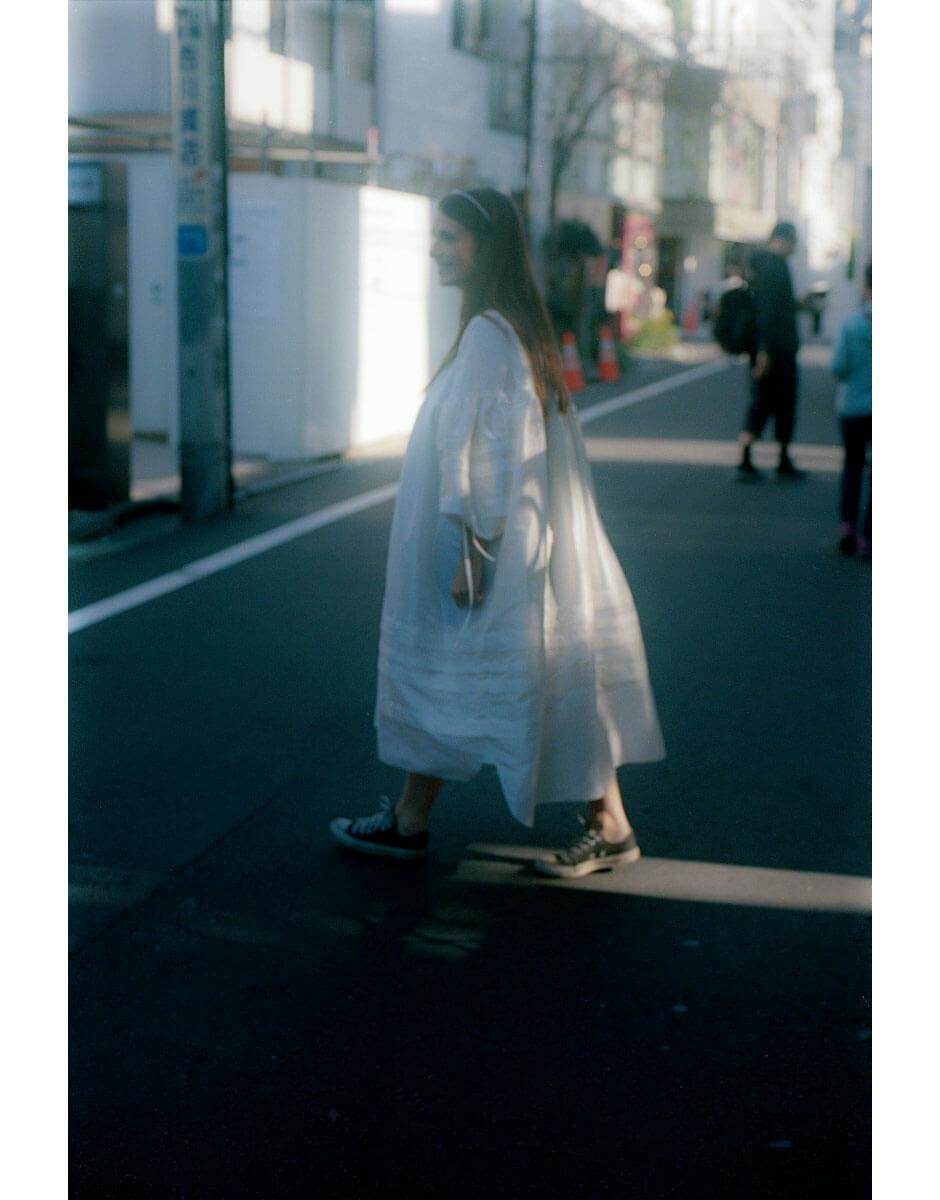
−異なる2つの要素の調和を目指しているということでしょうか。
私は、常に異なる要素のバランスを取ることを意識しています。
ショーで歩いている女の子たちが、日常でも私の服を着ているように感じさせたいのです。
ショーやコレクションのキャスティングの時に、アトリエに入ってくるモデルや、自転車から降りて入ってくるモデルなどに大いに影響されています。
ほつれた髪の毛や、ノーメイクなのにも関わらず、すごくエフォートレスで麗しい。
無垢な瞬間を捉えたコレクションが一番美しいと思っています。
−「CECILIE BAHNSEN」の洋服がショーの中だけでなく、着る女性の一部になって欲しいのですね。
ショーを制作していく際に、クリエイティブプロセスの一環としてキャスティングやフィッティングを頻繁に行います。
それは、素材の軽さや動きを確かめるためでもあります。
マネキンに着せるのと、実際に女性に着せるのとでは服の印象が全く異なって見えます。
動きを添えることで、まるで服に命が宿るかのように変容するのです。
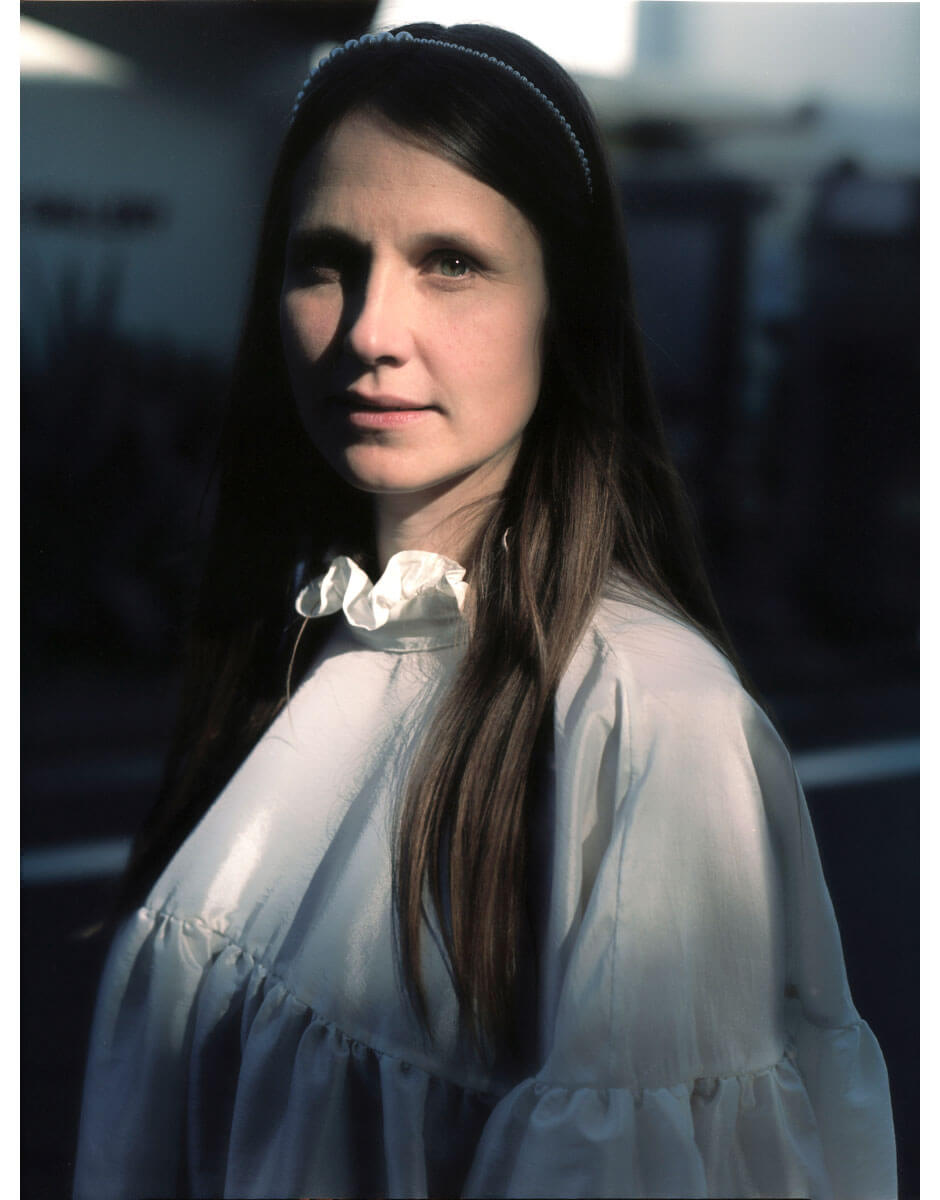
−ブランドとしての将来の展望は何ですか。
東京や香港、ニューヨークなどで、私の服を着てくれる女性がいることにとても誇りを持っています。
また、「CECILIE BAHNSEN」とファンの女性たちの間で成り立った姉妹のような関係性をずっと大事にしていきたいです。
より多くの女性がこの共同体の一員になれるような世界観を作ることを、将来の目標としています。
−Lula JAPAN最新号のテーマが「紅色」なのですが、あなたは「紅色」と聞いて何を連想しますか。
とても素敵な色だと思います。
原色の組み合わせ。原色の強さ。
たくさんの色を合わせなくても、たった1色だけでも充分。
紅色の持つアイデンティティなどを考えさせられます。
Cecilie Bahnsen:
コペンハーゲンを拠点に活動するデザイナー。
2007年にロンドンのロイヤル・カレッジ・オブ・アートを卒業し、パリの「DIOR」や「ERDEM」、また、John Gallianoのもとでデザインアシスタントを務めた。
2015年、故郷のデンマークに戻ると、独自の素材を用いてハンドメイドで制作する自身のブランドを設立し、生地の組み合わせとマテリアルのレイヤリングによる機能性とエフォートレスさのバランスに焦点を置いている。
ceciliebahnsen.com
Ethereal and feminine. Innocence within power.
This is the female image of the Danish brand CECILIE BAHNSEN.
MATCHESFASHION held their first solo exhibition in Tokyo, having the Danish womenswear designer Cecilie Bahnsen as their guest designer.
Lula JAPAN interviewed her and asked her on the prospects of her eponymous label and her creations.
Although your brand has always been known to use femininity as a way of expression, it did feel that your newest collection had a different aspect into it.
We really wanted to bring in a more masculine contrast.
And I also wanted to work closer to the body, so first we brought in the suit which was a really big challenge for me because it is a much more masculine look and silhouette.
But I wanted to try and meet more women with different kinds of ways of being feminine and I think you can be super feminine in a jacket and trousers if you cut it the right way.
And it was challenging and amazing to tailor much closer to the body because what I’ve decide is always really sculptural but this was sculptural in a different way.
Then we also worked a little bit with sensuality and maybe people think that it is more sensual to have dresses opened in the front but I always really liked showing the back and looking at different ways to wrap the dress around the body and kind of creating this sculpture by how you put the dress on.
It is quite interesting how you use transparent materials that are quite revealing but still manage to keep this elegance and femininity.
I think the collection always have an innocence into it or something effortless.
So I never wanted it to become sexy or wanted it to be more feminine or more masculine.
I think a lot of people in the studio think I am too pedantic but it is really about this balance between masculine and feminine, and between detail, complex and minimalism.
That is what makes the brand strong.
It is a perfect balance.
Those two worlds were very harmonious on that collection.
I always try to keep that balance in my shows.
Something that feels like the girls who walks the show would also just put it on my clothes on their daily lives.
I am always inspired by the girls I meet on castings and for the shows.
When they just come in to the streets or arrive in their bike, they are so effortless and their hair are kind of messy, with no makeup, and I think the collection is most beautiful when it catches that purity.
You want your clothes to not only become a part of your show and but also a part of every woman that wears it.
During the creative process, we do a lot of fittings.
This is also to make sure that the clothes move and that it is light and comfortable.
When you work with a mannequin, it is really still and it is very different from when you work with the girls.
You get that movement and that whole feel that it is so important.
What is your future prospective for your brand?
I am really proud of where we got and I think it is about growing this sisterhood that we have with our customers and that is really one of my biggest achievements.
Seeing people wearing my clothes in Tokyo, Hong Kong, New York, etc., is so amazing.
It is really about trying to create a universe where more women can be part of and try to create this sisterhood that is really becoming a keyword for us.
Our latest issue is about “beni-iro” which means crimson red in Japanese.
What does this color reminds you of?
I think is a lovely color.
One thing that I always love about colors, is when they are primary.
And I really like this combination of just having the highlights of them.
The beni-iro color is strong, and it really shows that it is not about loads of colors.
But one is enough, because it can have so much identity onto it.
Cecilie Bahnsen:
Danish fashion designer with an MA at the Royal College of Art in London.
After graduating from the Danish Design School in 2007 she worked as an assistant for CHRISTIAN DIOR in Paris as well as for ERDEM.
While creating the look and selecting materials for her collection, Cecilie focused on achieving an effortless feel and a style that would radiate wearability.
She worked with soft layering of materials and a strong focus on techniques and fabric combination.
SHARE
RELATED ARTICLES
LATEST TOPICS
PICK UP
-
- Fashion
- Art&Culture
- Beauty
- Encounter
- 26.Nov.2025
-
- Fashion
- 13.Nov.2025
-
- Fashion
- 03.Dec.2025
-
- Fashion
- Art&Culture
- Beauty
- Encounter
- 01.Oct.2025
-
- Fashion
- Art&Culture
- 04.Nov.2025
-
- Art&Culture
- 30.Oct.2025
-
- Beauty
- 12.Nov.2025
-
- Fashion
- 06.Nov.2025
-
- Fashion
- 14.Oct.2025
-
- Fashion
- 31.Oct.2025
-
- Fashion
- 25.Aug.2025
-
- Encounter
- 11.Sep.2025
-
- Fashion
- 08.Sep.2025
-
- Encounter
- 30.Sep.2025
-
- Art&Culture
- 01.Aug.2025
-
- Fashion
- 25.Jun.2025
-
- Fashion
- Art&Culture
- Beauty
- 20.Jun.2025
-
- Fashion
- Art&Culture
- 13.Jun.2025
-
- Fashion
- Art&Culture
- Beauty
- Encounter
- 09.Jun.2025
-
- Fashion
- Art&Culture
- 13.Jun.2025
-
- Fashion
- Art&Culture
- 04.Jun.2025
-
- Fashion
- Art&Culture
- Beauty
- Encounter
- 22.Apr.2025
-
- Fashion
- 15.May.2025


